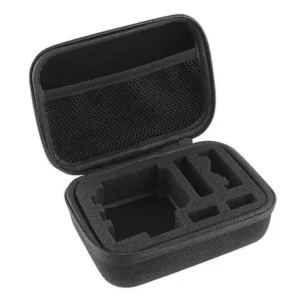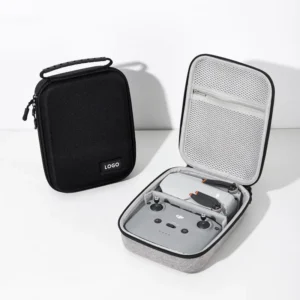How to Classify Digital Camera Bags?
With the widespread use of digital cameras, more people carry them for travel, outdoor photography, and daily life recording. To protect this valuable equipment, a digital camera bag is essential. These bags not only provide storage but also shield cameras and accessories from dust, scratches, shocks, and even rain.
So, how do we classify camera bags? Below are the most common categories used in the market today.

1. Classification by Brand
From a branding perspective, camera bags generally fall into three categories: original manufacturer bags, branded professional bags, and generic bags.
Original manufacturer bags: Brands such as Canon, Sony, Panasonic, Olympus, and Fujifilm often include camera bags specifically designed for their devices. These are usually produced by professional OEM factories with strict quality control, resulting in precise workmanship and a high level of durability.
Professional branded bags: Renowned companies like Lowepro, Domke, Think Tank, and Case Logic specialize in professional-grade DSLR camera cases and mirrorless camera bags. These are often designed with premium materials, ergonomic straps, and modular compartments for photographers who carry multiple lenses and accessories.
Generic or unbranded bags: These tend to be more affordable and widely available on e-commerce platforms. While they may lack the refined quality of big-name brands, they are practical for entry-level or casual users who simply need a compact camera pouch or a lightweight shoulder bag.
2. Professional Bags vs. Everyday Bags
From a functional point of view, camera bags can be divided into professional and ordinary categories.
Professional camera bags: These are designed for advanced photographers and videographers. They often feature waterproof camera backpacks, padded dividers, quick-access zippers, and modular storage compartments for lenses, flashes, tripods, and batteries. Professionals may invest in these bags to accommodate multiple cameras and accessories during shoots.
Everyday or ordinary camera bags: For casual users, a compact camera case or a simple travel camera shoulder bag may be sufficient. These bags usually fit one camera, extra memory cards, and a spare battery. They are cost-effective, lightweight, and designed for convenience rather than extensive gear storage.
3. Classification by Material
The material of a digital camera bag significantly impacts its durability, style, and price.
Leather camera bags: Made from genuine leather, these are elegant and high-end but usually more expensive. They are popular among lifestyle photographers who value aesthetics as much as functionality.
Synthetic leather (PU) camera cases: These mimic the appearance of genuine leather but are lighter and more affordable, making them attractive for mainstream markets.
Fabric and canvas camera bags: The most common category, available in styles such as canvas pouches, waterproof nylon backpacks, and polyester carrying cases. These materials are widely used due to their balance of cost, weight, and weather resistance.
4. Classification by Carrying Method
Finally, camera bags can also be classified by how they are carried.
Waist camera pouches: Ideal for compact cameras or point-and-shoots. Lightweight and stylish, they allow for quick access during travel.
Shoulder camera bags: Popular among photographers who need a balance of portability and capacity. They typically hold one camera and a few lenses, making them versatile for daily use.
Backpacks: Common for professional use, DSLR camera backpacks can store multiple camera bodies, large telephoto lenses, drones, and laptops. They are often padded and waterproof, ideal for long trips and outdoor shoots.
Messenger or sling bags: Designed for mobility, these bags allow fast access to cameras while moving. They’re a favorite among street and travel photographers.
Conclusion
Digital camera bags come in many forms—by brand, function, material, or carrying style. Whether you’re a professional photographer needing a custom waterproof camera backpack or a casual traveler looking for a compact camera pouch, there is always a solution that meets your needs.
For B2B buyers such as Amazon sellers, wholesalers, and photography accessory retailers, understanding these classifications helps in sourcing the right products for different market segments. A well-chosen camera carrying case not only protects valuable equipment but also adds brand value, making it a vital accessory in the digital photography industry.





